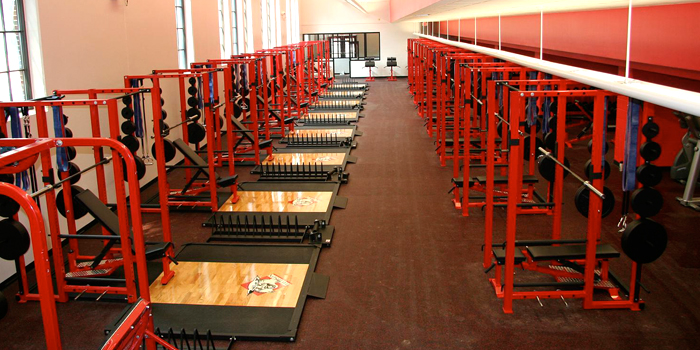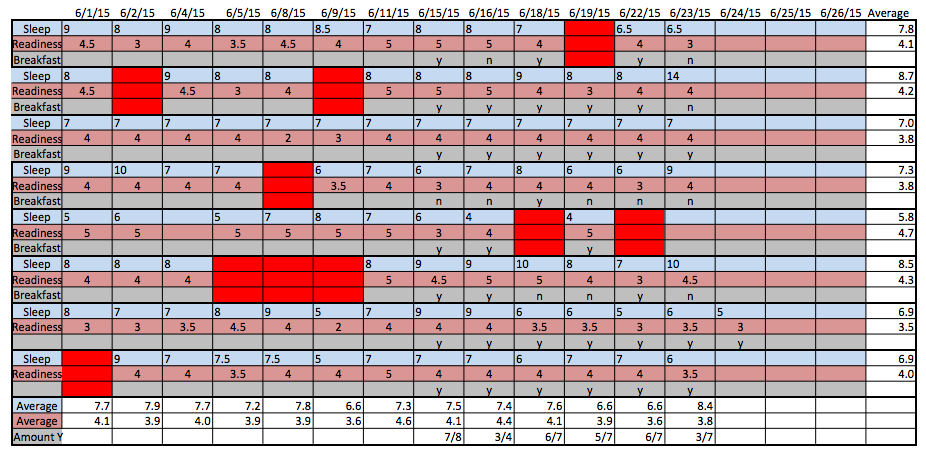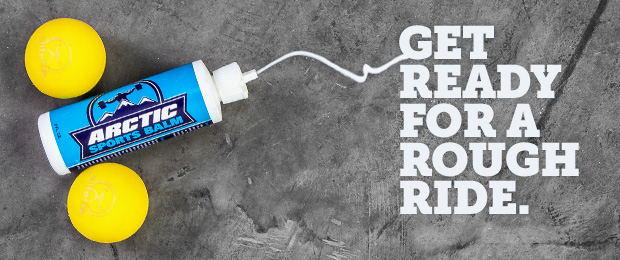
I just completed my fourth year as a full-time collegiate strength coach, but I've been involved with coaching and the fitness industry for 10 years. Compared to many others who write for this site, I have little experience, but even I have seen some trends come and go. This article stems from a conversation that I had with my assistant and interns a few weeks ago and examines what I believe happens with some of these trends and how strength coaches are left to deal with them.
Scope of Practice
This is something I discuss with student-athletes on a weekly basis. It usually comes from questions from those we work with who want to know if we can give them a diet plan or diagnose why their knee hurts. As a strength and conditioning professional, we can advise on our area only. If an athlete has pain, we hand him over to our certified athletic trainers or physical therapists. If they have specific questions about nutrition, we can give general recommendations, but we can't write out a detailed plan.
Corrective Exercise
I feel like I have a pretty good understanding of where this trend originated from, how it grew and how it has leveled off. I worked as a basketball graduate assistant at Averett University, where Gray Cook and Lee Burton teach and practice. I was able to pick their brains, sit in on classes and view how they trained athletes. Whether you agree with using the functional movement screen or not, it's a tool in the toolbox and so are all of the progressions, regressions, corrective exercises and mobility exercises. This system, along with others, opened the eyes of strength coaches to what activation and mobility work can do for our athletes from the perspective of physical therapists and athletic trainers.
While this was a great shift for me, some took it too far to where corrective exercise, functional exercise and movement preparation were the only forms of exercise within a training session. Strength coaches became movement specialists. You could, and still can, get certifications in corrective movements and market yourself this way. Then it became the strength guy versus the corrective or functional guy. You found yourself on one side or the other, when in reality, there is no need to choose. I think the functional movement screen team and Charlie Weingroff have made excellent cases to work together to refer out, whether it’s to your certified athletic trainer or physical therapist if you’re in a private setting. They've also given us the tools to have a better conversation with those we are referring out to and the ability to give a training stimulus that doesn't have a negative effect on a potentially painful area. However, it's something else that we as strength coaches need to have an understanding of.
You could go on and on with the pieces that make up a strength program: speed, Olympic lifting, powerlifting, HIIT, agility training, core training, TRX training and so on. We need to have at least a basic understanding of everything (if it works) because there doesn’t seem to be too many coaches left who still say, “This is the one way that works and I’ll never change.”
The Influx of Technology and Athlete Monitoring
Unless you're old school and don’t use social media or you read stuff from the last five years and stay away from continuing education of any kind, you know that technology and monitoring are making their way from the pros to college athletic departments. It is now necessary for strength and conditioning coaches to understand velocity-based training, monitoring, wearable technology and heart-rate variability.
I think it's great that our general understanding of mobility and correctives can allow us to have better conversations with physical therapists and certified athletic trainers and that same understanding of speed can allow for those conversations with our track coaches. The same goes for having the technology to show when our athletes need a break, whether it's from questionnaire monitoring or velocity-based tracking. Understanding these can help us give pertinent, potentially objective feedback to coaches, and dashboards or something like that can help those coaches better understand what we're seeing. But where does it end?
Professional staffs have a multitude of members for sports science, statistics, speed training, physical therapy and, of course, strength and conditioning. This trickles down to high-level college programs that are following suit. But where does this leave the mid-majors and small schools that don’t have the budget to hire staff for each individual piece of the puzzle? We end up getting a little overextended and learning more and more about each of these areas, giving us a better strength education overall but also making it easier to forget why we are there in the first place, which is to:
- Aid in the development of our student-athletes, on and off the field of play
- Reduce the likelihood of injury
- Educate the athletes on how to spend the 23 hours of the day that they aren't with us.
I understand that technology can help with all that, but if you have kids who are weak, slow, don’t work hard and don’t move well, does it matter? (No, it doesn’t. And I plan on writing a book titled It Doesn’t F@^*ing Matter. I know all of you could be co-authors.)
Like other trends, the pendulum usually swings past the midline before it falls back to where it should be. The goal as collegiate strength coaches is to not let the pendulum swing us too far to the point where we need a master’s degree in biomedical engineering or statistics before we realize we didn’t need it in the first place, to realize sooner than the average gym-goer or young coach that an hour devoted to nothing but corrective movements isn't yielding the results you can get from sticking to the basics of strength training.
I can honestly say that I've let the pendulum swing my coaching in the past. I think I learned from it so that it won’t happen again during this tidal wave of technology and information that is really just starting to pick up steam with some of the new products available. I don’t know what the answer is—maybe progressions to how much you use technology based on training age or the use of certain pieces with upperclassmen when they've started to “get it”?
I’d love to hear what anybody out there is using, with or without a budget, and how it has helped. I hope we can all have conversations about how we can best outfit our different sized universities with this new area of strength and conditioning without letting it pull from the areas we know we are good at and get results from.
Bobby Fisk is the head strength and conditioning coach at NJIT in Newark, New Jersey. He can be reached at fisk@njit.edu.











1 Comment